Cross-leaved heath Erica tetralix f. stellata 'Pink Star'
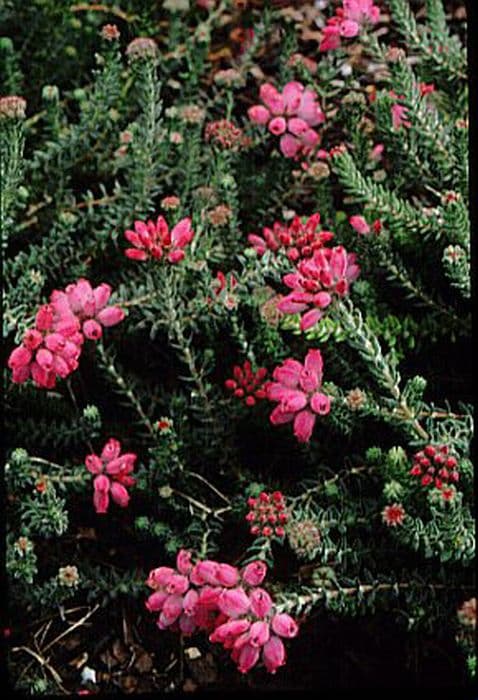
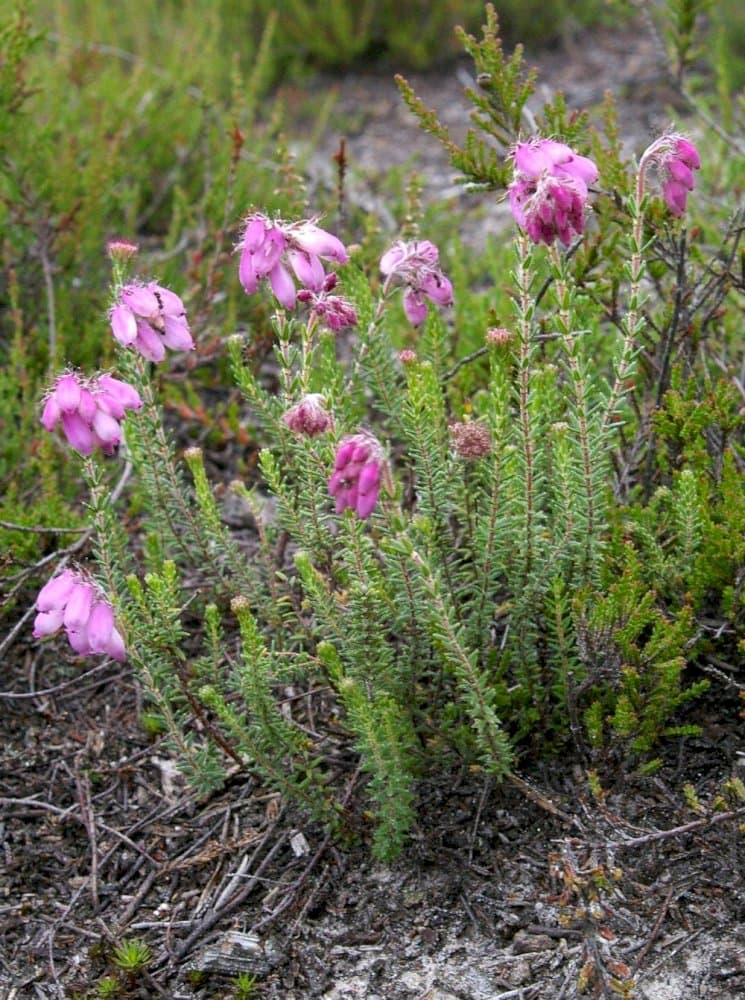
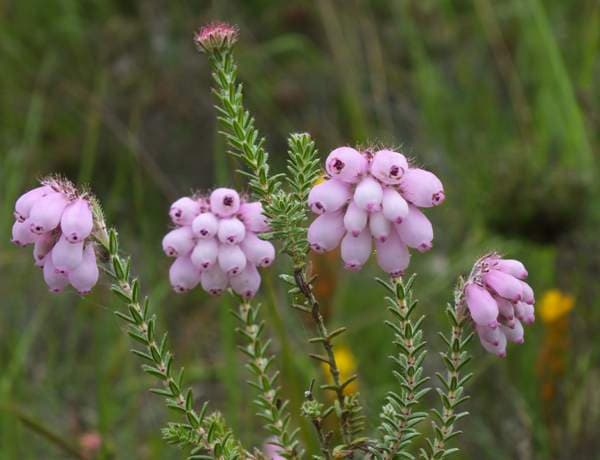
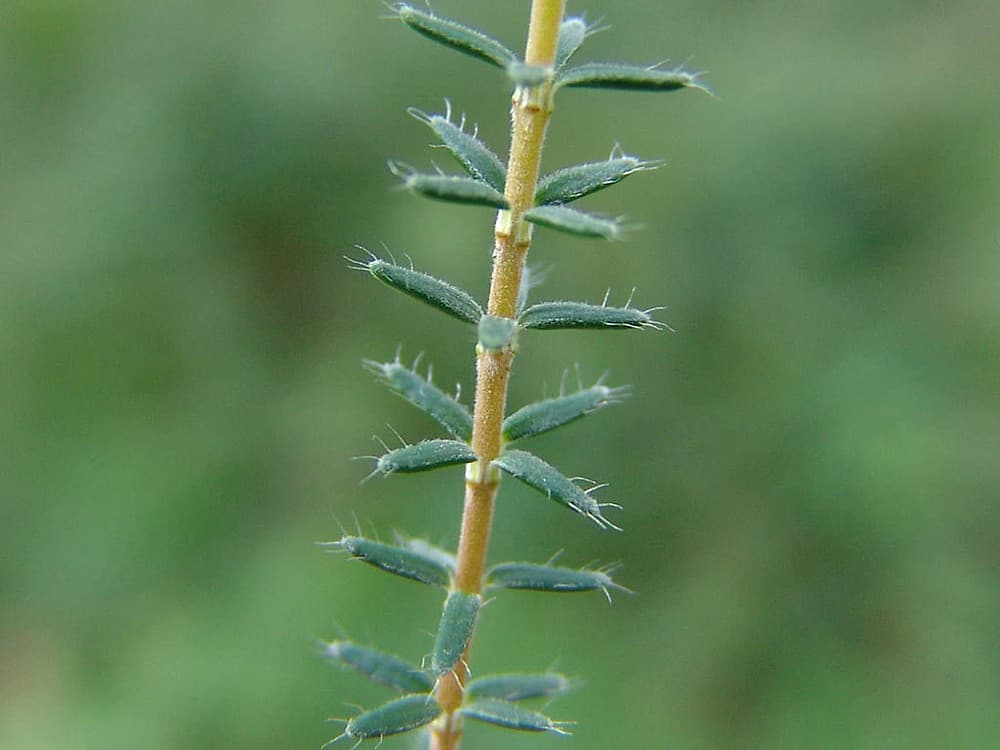
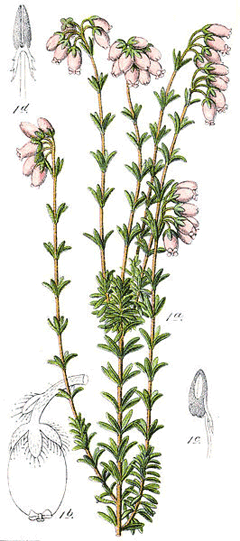
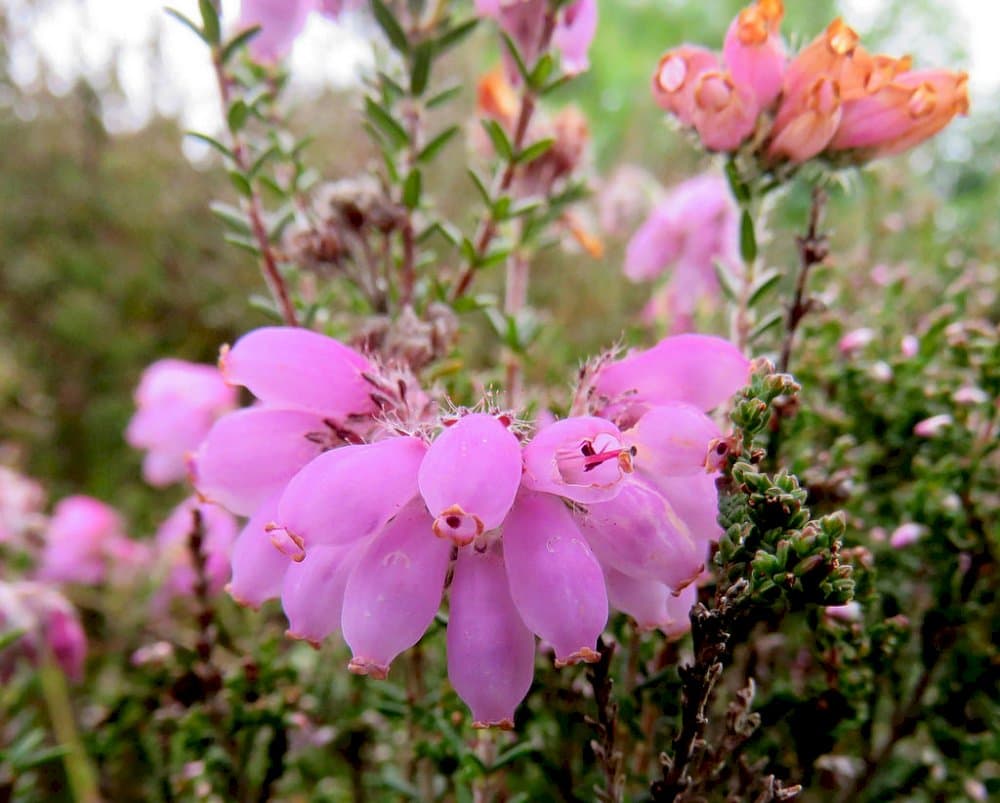
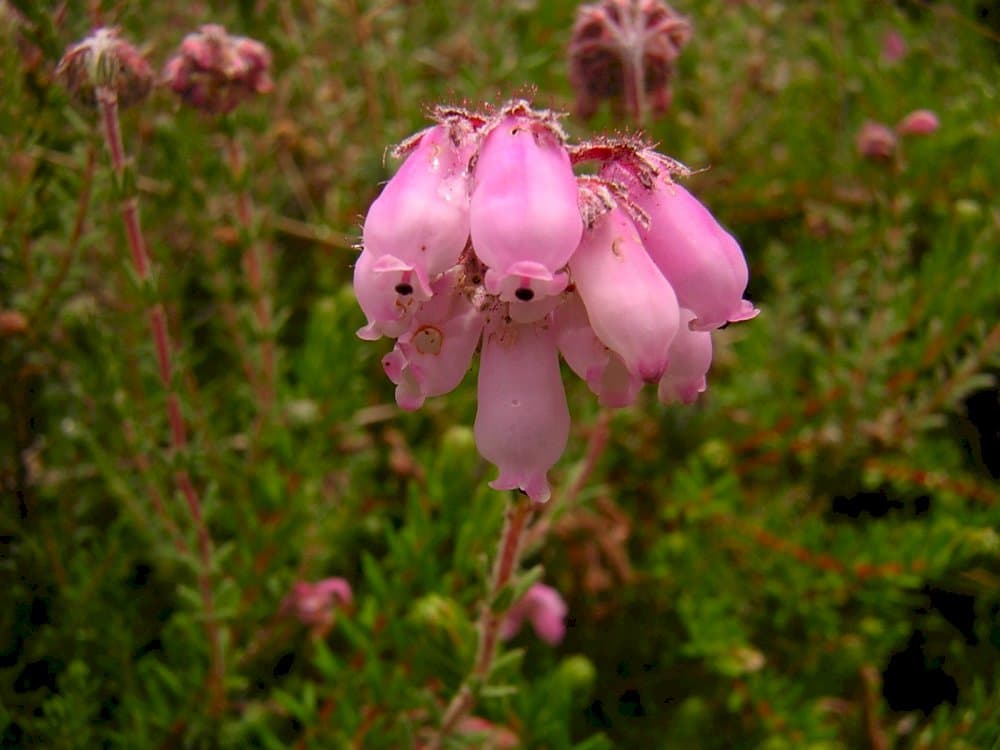
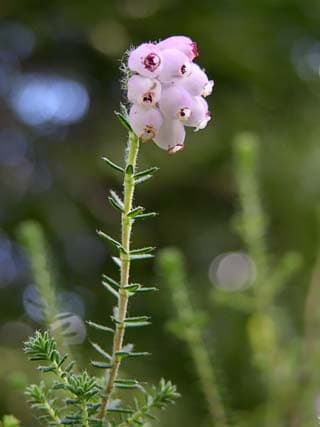
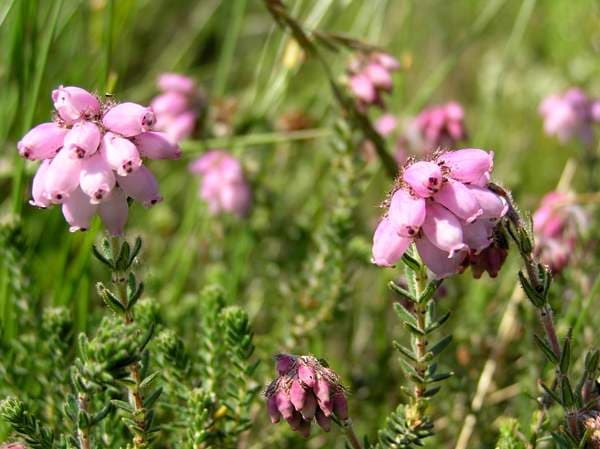
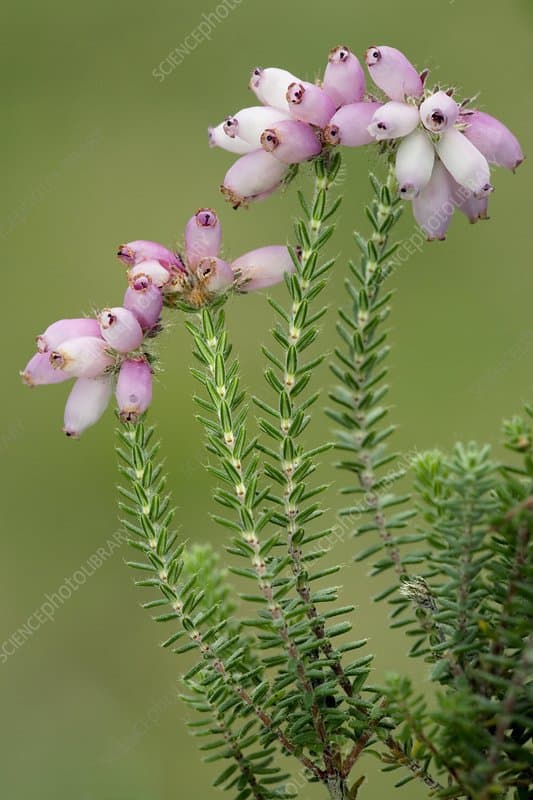
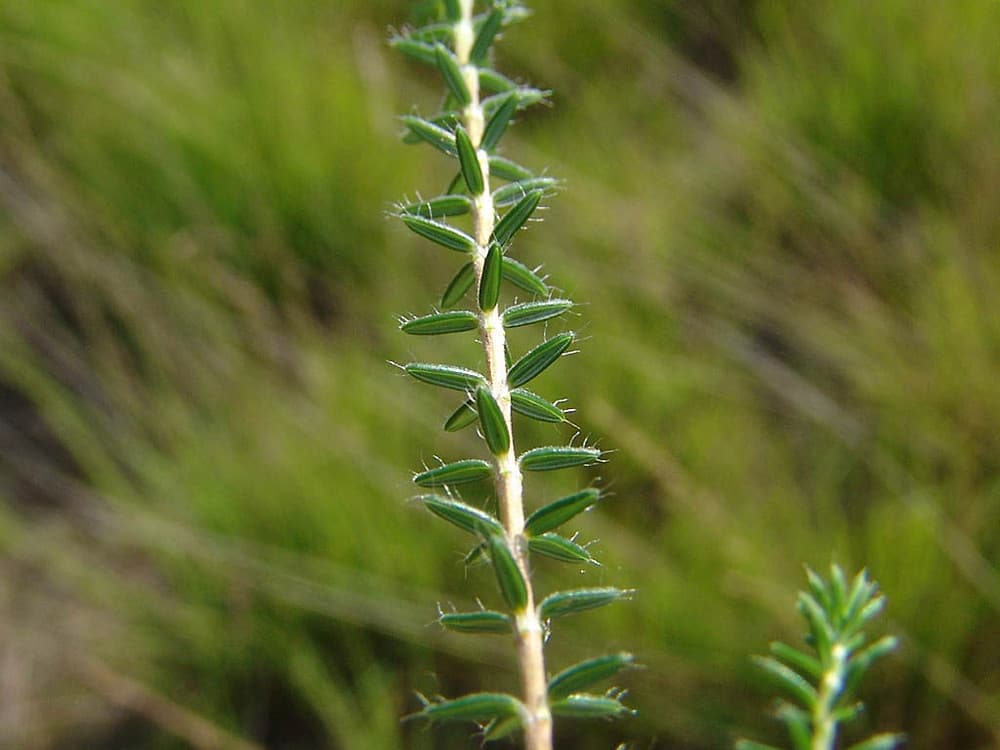
ABOUT
The plant in question, commonly known as 'Pink Star', boasts a striking appearance characterized by its myriad of delicate, star-shaped flowers. These blossoms exhibit a soft pink hue, creating a gentle yet enchanting visual effect. The foliage presents a lush green backdrop, consisting of fine needle-like leaves, which contribute to the plant's overall feathery texture. 'Pink Star's' growth habit is typically rounded and dense, providing a full-bodied presence that is rich with color and form. This plant is particularly noted for its hardiness and its ability to produce a profuse display of pink flowers that can add a touch of elegance to any garden setting.
About this plant
 Names
NamesFamily
Ericaceae.
Synonyms
Cross-leaved Heath, Bell Heather, Pink Star.
Common names
Erica tetralix f. stellata 'Pink Star'.
 Toxicity
ToxicityTo humans
Cross-leaved heath is generally considered non-toxic to humans. There are no common reports of poisoning or toxic reactions from ingestion of this plant. It is not typically associated with adverse health effects when handled or ingested in small quantities.
To pets
Cross-leaved heath is also generally considered non-toxic to pets. There are no widespread reports of toxicity or poisoning in domestic animals such as dogs and cats from ingestion of this plant. It is not known to cause significant harmful effects to pets when encountered in a typical household or garden environment.
 Characteristics
CharacteristicsLife cycle
Perennials
Foliage type
Evergreen
Color of leaves
Green
Flower color
Pink
Height
1 foot (30 cm)
Spread
1 foot (30 cm)
Plant type
Shrub
Hardiness zones
5
Native area
Europe
Benefits
 General Benefits
General Benefits- Ornamental Value: 'Pink Star' adds aesthetic appeal to gardens with its delicate pink flowers and attractive foliage.
- Wildlife Attraction: The flowers provide nectar for bees and other pollinating insects.
- Low Maintenance: It typically requires little care once established, making it ideal for low-maintenance landscaping.
- Drought Tolerance: Once established, it can tolerate periods of drought, reducing the need for frequent watering.
- Adaptability: It can thrive in a variety of soil types, although it prefers acidic, well-drained soils.
- Compact Growth: This cultivar has a compact growth habit, making it suitable for small gardens or as a ground cover.
- Year-Round Interest: Evergreen foliage ensures the plant remains attractive throughout the year.
- Cold Hardy: It can withstand cold temperatures, making it suitable for cooler climates.
 Medical Properties
Medical PropertiesThis plant is not used for medical purposes.
 Air-purifying Qualities
Air-purifying QualitiesThis plant is not specifically known for air purifying qualities.
 Other Uses
Other Uses- Crafting Materials: Erica tetralix can be dried and used for making decorative wreaths and floral arrangements, adding a touch of natural beauty to home decor.
- Erosion Control: The plant’s dense growth habit makes it suitable for stabilizing soil on slopes and preventing erosion in landscapes prone to losing ground.
- Photography: Due to its striking pink flowers, it's a popular subject for photographers and artists capturing the essence of heathland landscapes.
- Dye Production: The flowers and stems can be used to produce a range of natural dyes for textiles, yielding colors from yellow to green.
- Insect Habitat: When planted in gardens, it provides a habitat for beneficial insects and can increase the overall health of the garden ecosystem.
- Education: Erica tetralix can be utilized in educational settings like botanical gardens to teach about plant life cycles and heather ecosystem conservation.
- Theme Gardens: It is ideal for creating fairy gardens or other thematic garden designs due to its delicate appearance and stature.
- Livestock Bedding: The plant's dry foliage can be used as bedding for small animals and livestock, offering them a soft and absorbent material.
- Aquarium Landscaping: Though not an aquatic plant, its intriguing form can be replicated to create unique, naturalistic designs in aquarium landscapes.
- Winter Garden Interest: The evergreen nature and winter flowering of the plant provide visual interest in gardens during the colder months when many plants are not in bloom.
Interesting Facts
 Feng Shui
Feng ShuiThe Cross-leaved heath is not used in Feng Shui practice.
 Zodiac Sign Compitability
Zodiac Sign CompitabilityThe Cross-leaved heath is not used in astrology practice.
 Plant Symbolism
Plant Symbolism- Loneliness: Erica, often known as heath or heather, generally symbolizes solitude due to its growth in barren highlands where few other plants can thrive.
- Protection: Heathers have been thought to possess protective qualities, offering shelter in the wild landscapes they dominate.
- Beauty: The 'Pink Star' variety, with its star-shaped pink flowers, represents admiration for natural beauty.
- Good Luck: Heather is often considered a lucky plant, and carrying it is believed to bring good fortune, especially 'Pink Star' for its rare beauty.
- Admiration: The delicate appearance of this plant's flowers can also symbolize the admiration one might feel for a loved one's beauty or strength.
 Water
WaterCross-leaved heath should be watered regularly to maintain consistently moist soil, as it does not tolerate drought well. Generally, watering once a week with 1 to 1.5 gallons of water is sufficient, but this may vary based on climate and soil conditions. During hot or windy weather, the plant may require more frequent watering to prevent the soil from drying out. During the winter or in cooler climates, water less often, ensuring the soil does not become waterlogged, which can lead to root rot.
 Light
LightCross-leaved heath thrives in full sun to partial shade. Ideally, place the plant in a location where it receives at least four to six hours of sunlight daily. If grown indoors, a south-facing window is typically best to provide the necessary light. However, in regions with very strong sun, some afternoon shade can help prevent scorching the foliage.
 Temperature
TemperatureCross-leaved heath performs best in cooler temperatures and can generally tolerate a range between 20°F to 70°F. The ideal temperature for the plant is between 40°F and 60°F. It can survive light frosts, but prolonged exposure to temperatures below 20°F may damage the plant. Protect the plant from extreme heat, especially in summer, as it can stress the plant and cause it to decline.
 Pruning
PruningCross-leaved heath benefits from light pruning to maintain its shape and encourage bushier growth. Prune after the flowering period has ended, usually in late summer or early fall. Cut back the spent flower stems and any leggy or overgrown branches, but avoid heavy pruning, which can damage the plant. Yearly pruning will also help rejuvenate the plant and promote more prolific blooming in the following season.
 Cleaning
CleaningAs needed
 Soil
SoilCross-leaved heath thrives best in a well-draining, acidic soil mix with a pH between 4.5 and 5.5. A mix of peat, coarse sand, and pine bark is ideal to provide the necessary drainage and acidity. Regularly monitor the soil's pH to ensure it stays within the optimal range for the plant.
 Repotting
RepottingCross-leaved heath should be repotted every 2 to 3 years to prevent root-bound conditions and to replenish its soil. The best time to repot is in the early spring, just before the plant enters its active growth phase.
 Humidity & Misting
Humidity & MistingCross-leaved heath prefers moderate to high humidity levels, ideally ranging around 60-80%. Avoid placing it in excessively dry environments and consider using a humidifier or pebble tray if indoor conditions are too arid.
 Suitable locations
Suitable locationsIndoor
Place cross-leaved heath in bright, indirect light with proper acidity soil.
Outdoor
Plant cross-leaved heath in acidic soil, part sun to full sun exposure.
Hardiness zone
4-9 USDA
 Life cycle
Life cycleThe life cycle of Erica tetralix f. stellata 'Pink Star', commonly known as the cross-leaved heath 'Pink Star', begins with seed germination, which occurs in suitable conditions typically in a sandy or peaty substrate. After germination, the seedling develops a root system and shoots, gradually forming a small shrub with needle-like leaves and a woody stem. During its vegetative growth phase, 'Pink Star' grows slowly, forming a dense mat of foliage, and it can start to produce flowering stems as early as the second year. It reaches maturity and begins its reproductive stage, producing clusters of pink flowers that attract pollinators like bees and butterflies. After pollination, the flowers produce tiny capsules containing seeds that, when mature, are dispersed by wind or gravity. This plant is perennial, and with proper conditions, it can live for several years, going through repeated cycles of growth and dormancy aligned with the seasons.
 Propogation
PropogationPropogation time
Spring to summer
The Erica tetralix f. stellata 'Pink Star', commonly referred to as the cross-leaved heath, is typically propagated using semi-ripe cuttings. This method involves taking cuttings from the plant during the late summer months. To do this, a gardener would select a healthy non-flowering shoot and cut a length of about 2-4 inches (5-10 cm). The lower leaves are then stripped off, and the cut end may be dipped in rooting hormone to enhance root development. The prepared cutting is then inserted into a pot filled with a mix of perlite and peat or a well-draining potting mix. It's vital to keep the cuttings in a humid and shaded environment until root establishment, which could take several weeks. After rooting, the new plants can be gradually acclimated to more light before planting out.









